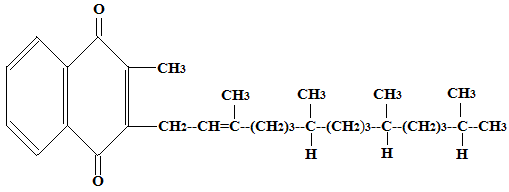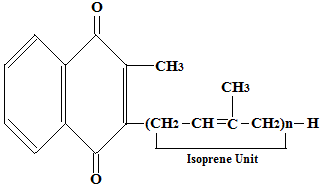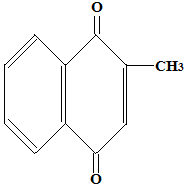Vitamin K - Occurrence and Absorption
Occurrence of Vitamin K
The best dietary sources of Vitamin K are spinach, cabbage, cauliflower and other green vegetable. Less efficient sources are tomatoes, cheeses, egg yolk and liver. The normal bacterial flora especially gram positive bacteria of the intestinal tract contribute significant amounts of vitamin K2.
Absorption of Vitamin K
Bile salts are needed for its transportation. After absorption it is stored to a moderate extent in the liver.
Detailed Description of Vitamin K
The name vitamin K stands for Koagulation vitamin given by Dam, a Danish worker to a substance that prevented haemorrhagie tendency. It is a fat soluble and heat stable but is sensitive to light and oxidizing agents. There are 2 types of naturally occurring vitamin K. Vitamin K1 is obtained from plants such as alfalfa leaf while vitamin K2 is derived from bacterial synthesis. Both are derivatives of naphthoquinone and have same general activity and both have been synthesized. Vitamin K1 is 2-methyl, 3-phytyle, 1,4-napthoquinone and is termed phylloquinone. It has the following formula

It is not soluble in water but water soluble derivatives are available which are highly effective.
In vitamin K2 the side chain is different and contains isoprene units instead of the phytyl group of vitamin K1. It has the following general formula

In above Formula, n(number of isoprene units) can be 6,7 or 9. Thus there are three vitamins K2 containing 6 isophrene units which make a difarnesyl group is called farnaquinone and is the original vitamin K2.
Many vitamers are also available. One of these menadione or vitamin K3 on weight basis is more potent than naturally occurring vitamin K. It is oil soluble but its diphosphate and sodium bisulfate derivatives are soluble in water and are used clinically both by mouth and by injection. However, these products may prove toxic and are in some cases ineffective, e.g. in treating overdosage with dicumarol. Water soluble derivatives of vitamin K1 also have been obtained and have proved very effective.
Menadione is 2-methyle, 1,2 nampthoquinone and has the following formula





